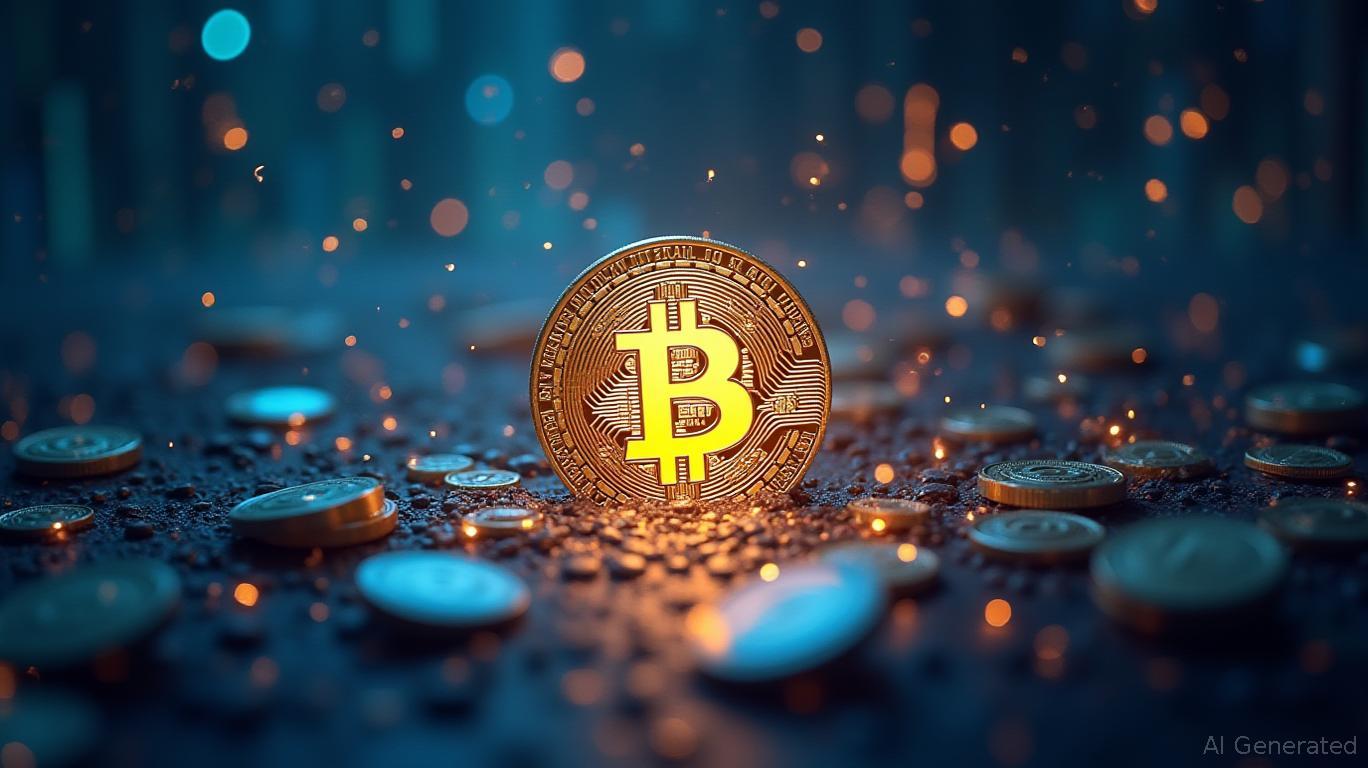Tokenized Deposits and Stablecoins: Competing for the Future of Blockchain-Based Finance
- Omid Malekan criticizes tokenized deposits for limited flexibility and interoperability compared to stablecoins, which offer cross-platform utility and 1:1 reserves. - Standard Chartered forecasts a $2 trillion RWA market by 2028, driven by DeFi growth and stablecoin liquidity, with Ethereum dominating due to its reliability and ecosystem. - Regulatory clarity, especially in the U.S., remains a critical challenge, with Standard Chartered warning of potential delays before 2026 midterm elections. - The de
Omid Malekan, an adjunct professor at Columbia Business School, expresses doubts about tokenized bank deposits, claiming they do not offer the same adaptability or technical benefits as stablecoins, as reported by
Malekan argues that tokenized deposits—which are essentially bank account balances recorded on a blockchain—are more limited in function than stablecoins. He compares them to "a checking account that only allows you to write checks to others at the same bank," highlighting their restricted use for transactions outside their own network, as per Cointelegraph. In contrast, stablecoins are fully backed and overcollateralized, providing enhanced security and flexibility. They can be moved between various crypto platforms, integrated into decentralized apps, and utilized in lending protocols—capabilities that tokenized deposits lack due to know-your-customer (KYC) requirements and restricted access.

In contrast, Standard Chartered foresees tokenized RWAs playing a pivotal role, projecting a dramatic rise in market value from $35 billion today to $2 trillion by 2028—a 5,600% increase. The bank credits this surge to the growing stablecoin sector, which has brought $300 billion in on-chain liquidity and promoted wider DeFi adoption. Geoffrey Kendrick, the bank’s head of digital assets research, believes stablecoins have paved the way for the tokenization of traditional assets like money-market funds, stocks, and real estate. He estimates $750 billion each in tokenized money-market funds and listed equities, with further expansion in funds, commodities, and corporate bonds, as mentioned by
According to
However, obstacles persist. Malekan’s concerns highlight the risks of tokenized deposits, such as their dependence on fractional reserves and limited ability to interact with other systems. At the same time, Standard Chartered warned that ongoing regulatory ambiguity—especially in the U.S.—could slow progress if clearer rules are not established before the 2026 midterm elections, as referenced by
This ongoing discussion mirrors larger issues within the financial sector. While Malekan sees tokenized deposits as less effective than stablecoins, Standard Chartered and other advocates believe RWAs can connect traditional finance with blockchain advancements. As DeFi moves from a specialized area to mainstream use, the competition to shape the future of financial infrastructure is heating up, according to
Disclaimer: The content of this article solely reflects the author's opinion and does not represent the platform in any capacity. This article is not intended to serve as a reference for making investment decisions.
You may also like
Crypto Plunges Amid Conflicting Fed Messages and Concerns Over Data Breaches
- Crypto prices fell amid conflicting Fed signals and U.S.-China trade deal uncertainty, despite eased trade restrictions and a 25-basis-point rate cut. - A UK data breach case highlighted crypto's vulnerability to insider fraud, with regulators expanding enforcement against data misuse in financial crimes. - Market volatility intensified as Fed's halted quantitative tightening created liquidity uncertainty, echoing 2019's 35% Bitcoin drop after QT ended. - Analysts remain cautiously optimistic about long-

Stellar News Today: Major Institutions Place Significant Bets on Stellar’s Real-World Blockchain Expansion
- Stellar's XLM token stabilized near $0.30 as Q3 2025 saw 700% surge in smart contract invocations and $5.4B RWA volume. - Partnerships with Chainlink and PayPal USD expanded Stellar's cross-chain interoperability and stablecoin adoption in daily transactions. - Institutional investments and $2T RWA market projections position Stellar as a leader in compliant blockchain solutions for global finance. - Technical analysis shows XLM trading in a tight range with potential volatility if buyers control $0.35 r

Hong Kong's Stablecoin Regulations Balance Innovation and Investor Protection
- Hong Kong mandates stablecoin issuance by SFC-licensed providers to strengthen investor protection and market stability. - Regulators reject DAT structure conversions for listed firms, warning against inflated valuations exceeding crypto holdings' value. - The framework aligns with global trends but contrasts with U.S. permissiveness, balancing innovation against mainland China's stricter crypto controls. - Stablecoin transaction volumes hit $4.65T in late 2025, yet regulators stress education to mitigat

Bitcoin Updates Today: How Bitcoin Mining Supports Grid Reliability Amid Japan’s Green Energy Transition
- Canaan Inc. partners with Japanese utility to deploy 4.5MW hydro-cooled Bitcoin miners for grid balancing, marking Japan's first government-backed "digital load balancer" initiative. - Avalon A1566HA-488T servers use smart control chips to dynamically adjust mining operations, enhancing grid stability while consuming 8,064W per unit at 16.8J/TH efficiency. - Project aligns with Japan's crypto regulatory reforms and global "clean crypto" trends, leveraging surplus renewable energy for mining without strai
